Kangaroos are more than just the memes you see on the internet; they’re Australia’s national symbol and some of the most remarkable mammals in the world. With their signature hops and unique physical features, these beloved marsupials are perfectly adapted to life in the vast Australian landscapes. From unbelievably tiny newborns to mad boxing skills, every aspect of their lives is positively fascinating. Whether it’s an interesting fact about their behavior or a strange characteristic they possess, you’re sure to find it in this list of 35 surprising facts revealing how truly amazing kangaroos are.
#1 Newborn Joeys Are The Size Of A Jellybean
Believe it or not, kangaroos are born incredibly small, weighing in at under a gram and measuring just shy of an inch long. Because kangaroos are marsupials, joeys continue to grow in their mothers’ pouches for about six to nine months before coming out to experience the world. Amazingly, once they’re fully grown, kangaroos can weigh over 200 pounds and reach heights of anywhere between three and eight feet.
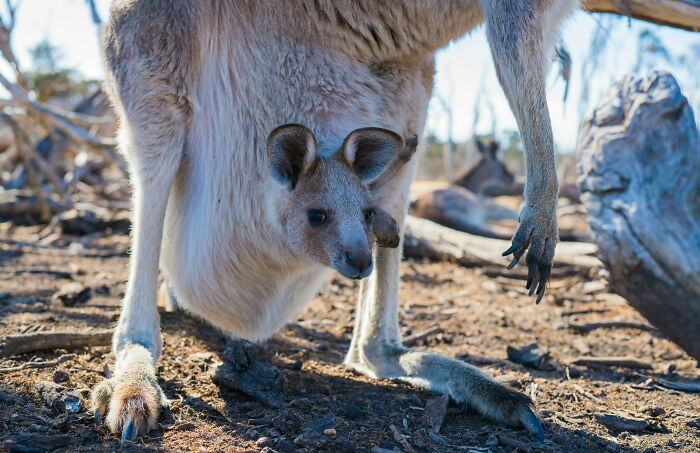
Image source: Ethan Brooke, PBS
#2 Kangaroos Can’t Walk Like Other Animals
Have you ever wondered why you’ve only ever seen kangaroos hop around everywhere? Well, that’s because, unlike other animals, they can only move their legs in unison and not one at a time. Although they can’t walk in the usual sense, kangaroos can move forwards slowly using a pentapedal gait, which involves propelling forward with the help of their tails. Surprisingly, the only time they can move their legs independently is when swimming.
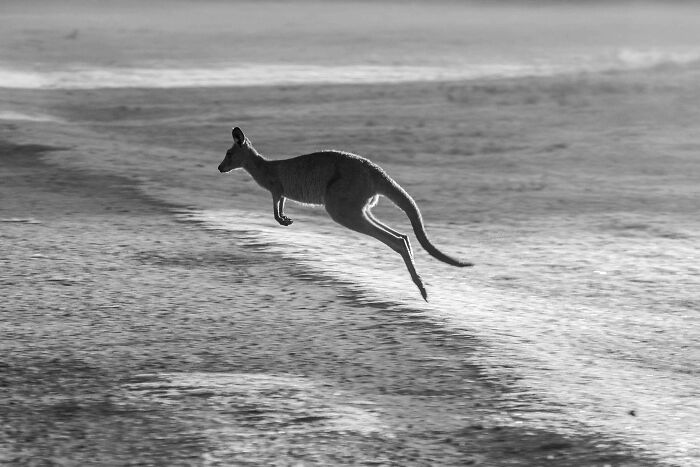
Image source: Jenna Reivolahti, ABC
#3 Kangaroos Technically Can’t Move Backwards
Unlike other animals that can move in all directions, kangaroos’ anatomy is quite restrictive and can only really accommodate forward movement. There’s an exception to this, though; turns out they can actually move backwards on rare occasions and with much difficulty, for example, when they’re swimming or during a fight. Interestingly, this inclination for forward movement is one of the reasons why the kangaroo appears on the Australian Coat of Arms, to symbolize a nation that’s constantly moving forward.
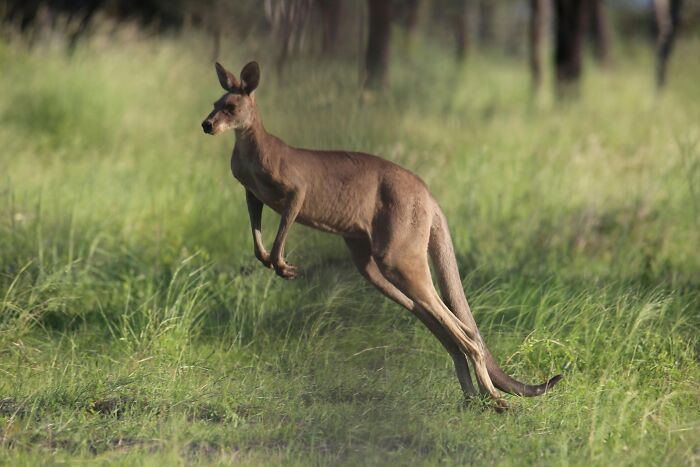
Image source: Tharshikan Sivapprakasam, Britannica
#4 Kangaroos Are A National Symbol Of Australia
Kangaroos are an important part of Australia’s national and cultural identity. Not only do they appear on the country’s coat of arms, but also on official logos and coins. Organizations such as the Royal Australian Air Force and Qantas Airways make use of kangaroos in their logos and emblems. As such, the beloved marsupials are one of Australia’s most recognized animals.
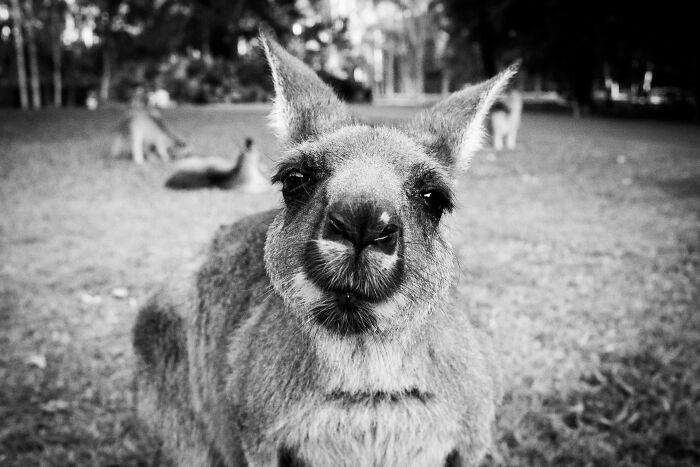
Image source: Nate Biddle, Wikipedia
#5 Kangaroo Mothers Can Produce Two Different Kinds Of Milk At Once
Interestingly, kangaroo mothers can tailor their milk to suit two joeys in different stages of growth at the same time. Younger joeys consume milk that’s rich in carbohydrates and immunoglobulins, while the older ones need milk that’s higher in fat and protein to grow properly. Therefore, a joey’s nutritional needs are sufficiently taken care of from newborn to fully grown due to its mother’s flexible milk production.
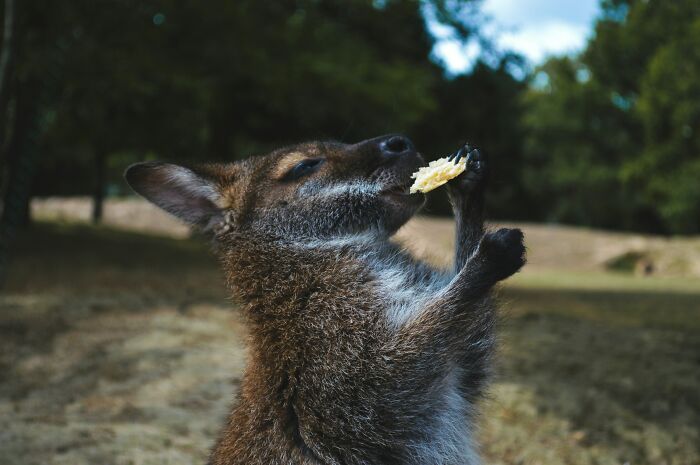
Image source: Gaaxb, Plant Science
#6 Kangaroos Are Scientifically Classified As Part Of The Genus Macropus
Thanks to their incredibly large hind feet, kangaroos belong to the genus Macropus, which literally translates to “big foot”. Amazingly, it’s these hind feet and strong legs that allow them to leap as far as 30 feet and as high as 10 feet in a single bound. Kangaroos are also quite fast, traveling at speeds over 30 miles per hour.
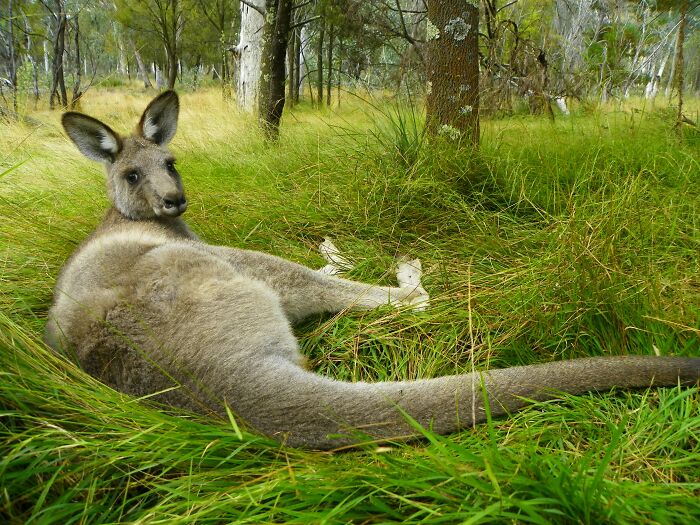
Image source: michaeljerrard, National Geographic
#7 Joeys Can Dive Headfirst Into Their Mothers’ Pouches
As it turns out, the quickest way for joeys to find safety is diving headfirst into their mother’s pouches. Not only is the pouch warm, secure, and strong enough to allow this action, but it also offers protection from all kinds of predators. Thankfully, once inside its mother’s pouch and safe from danger, the joey can reposition itself.
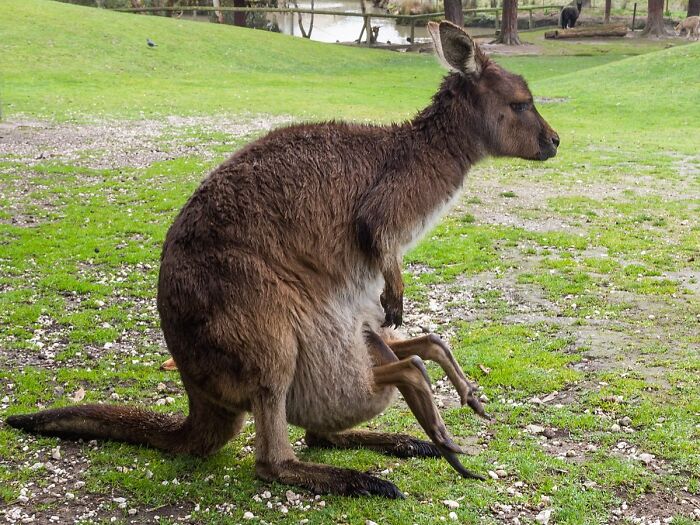
Image source: Mike Prince, az Animals
#8 Kangaroos Are Herbivores
Much like other herbivores, kangaroos feed on grass, shrubs, and other plants. Their molars and sharp incisors allow them to break down tough fibers. Another interesting thing about their eating process is that they will often regurgitate their food, chew and swallow it again to help with digestion. Due to their diet, kangaroos can also go long periods of time without water.
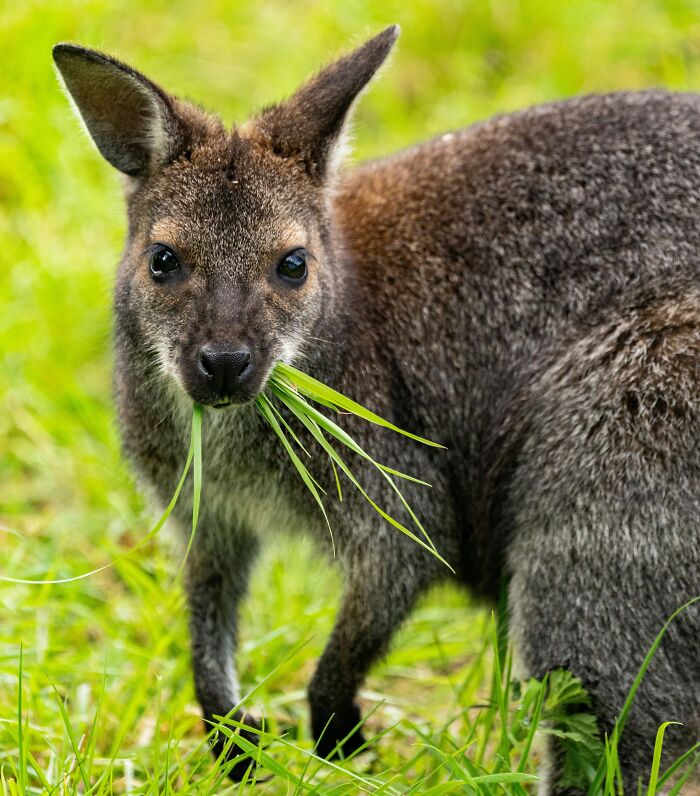
Image source: Fatih Simsek, PBS
#9 Kangaroos Are Quite Strong
We’ve all likely come across videos of some really buff kangaroos on the internet, so it probably doesn’t come as a shock to learn that kangaroos are surprisingly strong. While all species have a muscular build, it’s the male red kangaroos in particular that have incredibly bulky arms and shoulders, mostly used for dominance. Amazingly, all kangaroos have an impressive bite force at least six times greater than ours.
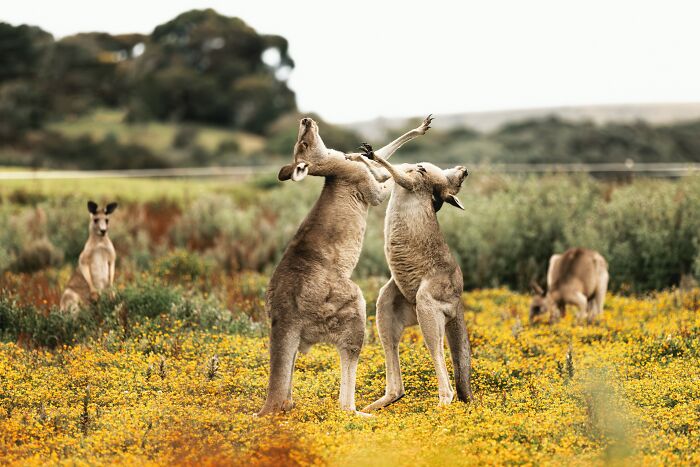
Image source: Joshua Earle, World Animal Protection
#10 A Kangaroo’s Teeth Never Stop Growing
Due to Australia’s tough vegetation, kangaroos have developed quite an interesting dental system. Unlike other mammals, their teeth continue growing even after they’re fully grown. Surprisingly, kangaroos have a conveyor belt-type tooth replacement system where their molars move forward, replacing those that are worn out, and their incisors continuously grow throughout their lives.
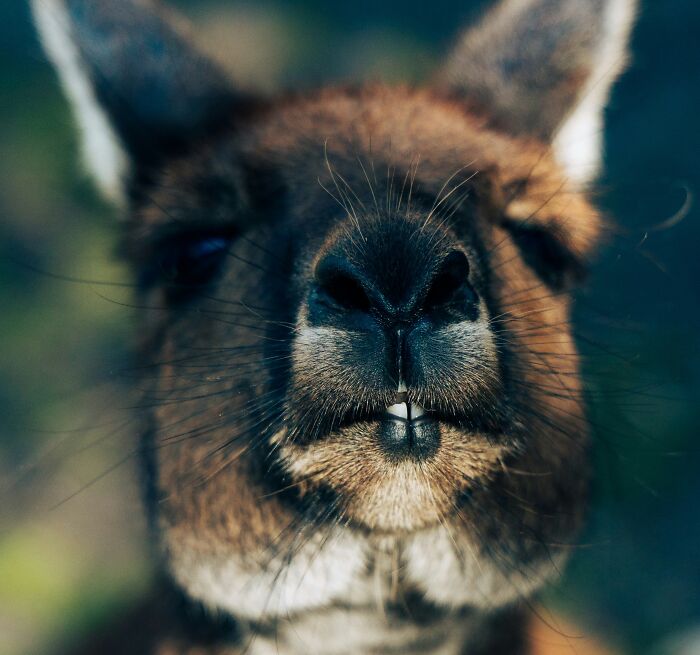
Image source: Davies Pro Visuals, PHYS ORG
#11 Kangaroos Are Protected Native Wildlife
While Kangaroos may not be endangered, they are, however, considered a protected species. In each state in Australia, capturing, injuring, or taking the life of the marsupials will land anyone without a license or permit in hot water. Because they are of such great importance to the country’s image, protection and sustainable management of their welfare is a necessity.
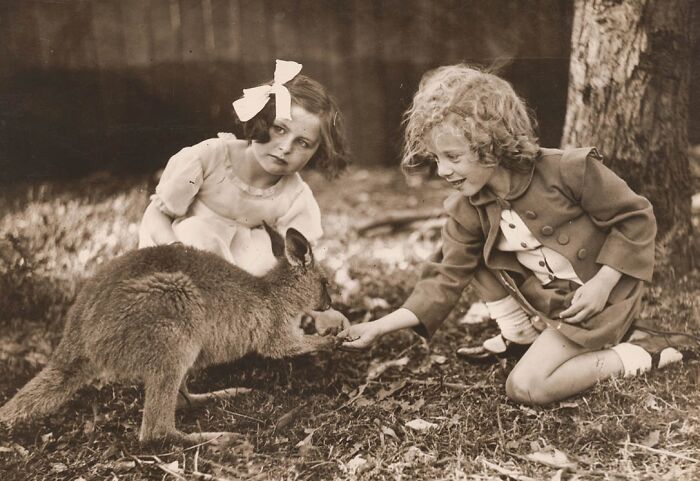
Image source: State Library of New South Wales collection, San Diego Zoo Wildlife Alliance Library
#12 There Is More Than One Species Of Kangaroo
While kangaroos belong to the same family as wallabies, wallaroos, and other macropods, comprising over 40 different species, actual kangaroos are only made up of four different species. These include the red kangaroo, eastern and western grey kangaroos, and the antilopine kangaroo. Interestingly, because they come from various habitats, their size, color, and traits differ from each other.
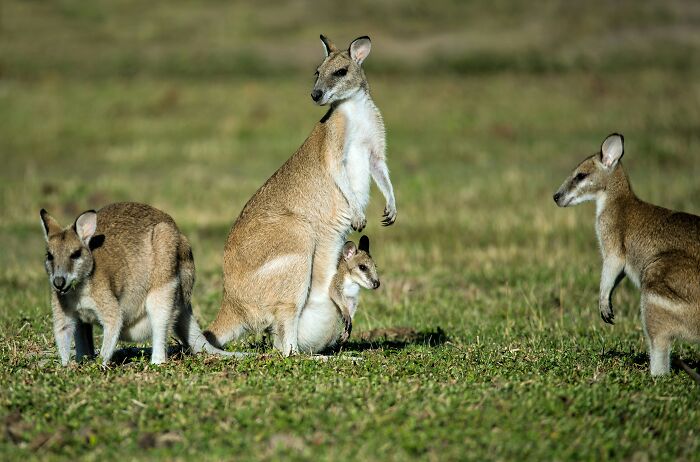
Image source: David Clode, Sightseeing Tours Australia
#13 One Type Of Kangaroo Actually Climbs Trees
Although most kangaroos tend to keep their feet firmly on the ground, one species is slow and clumsy there. Known as the tree kangaroo, this unique marsupial lives high in the rainforest canopy of Papua New Guinea and northeastern Australia. With strong forelimbs, long tails, and curved claws, they’re agile and well-adapted to life in the treetops, capable of leaping up to 30 feet between branches.
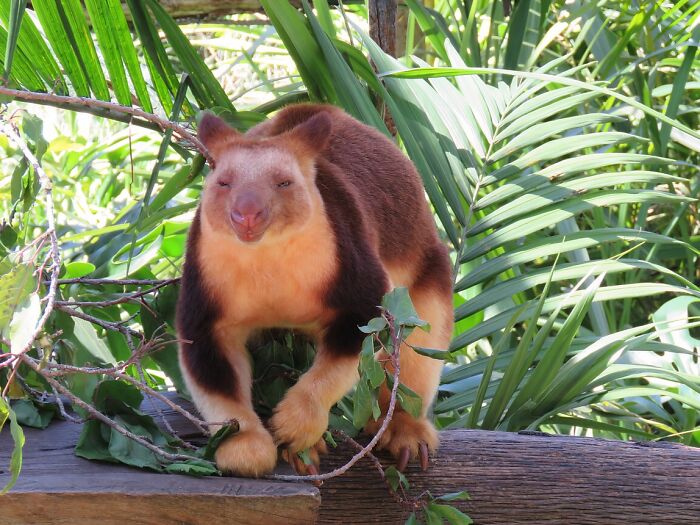
Image source: Calistemon, Australia
#14 Kangaroos Can Leap Incredible Distances
Kangaroos are really the only large animals that primarily hop to get around. With their strong legs and huge feet, they’re able to leap extraordinary distances of about 30 feet in a single jump. Most animals and humans would have to take many steps to make up the same distance. This movement style allows kangaroos to travel around the landscapes of Australia efficiently.
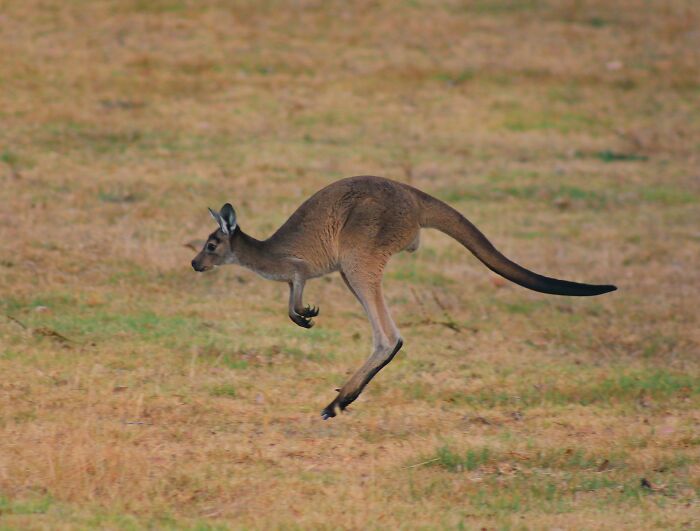
Image source: Ashish Upadhyay, Wikipedia
#15 Kangaroos Use Their Tail As A Fifth Leg
When kangaroos aren’t hopping around, they’re able to “walk” around slowly on all fours. Along with their hind and front limbs, they also use their tails as a fifth leg to support the unique pentapedal movement they do. Because the tails are muscular, they’re strong enough to hold the kangaroos up when they walk and fight.
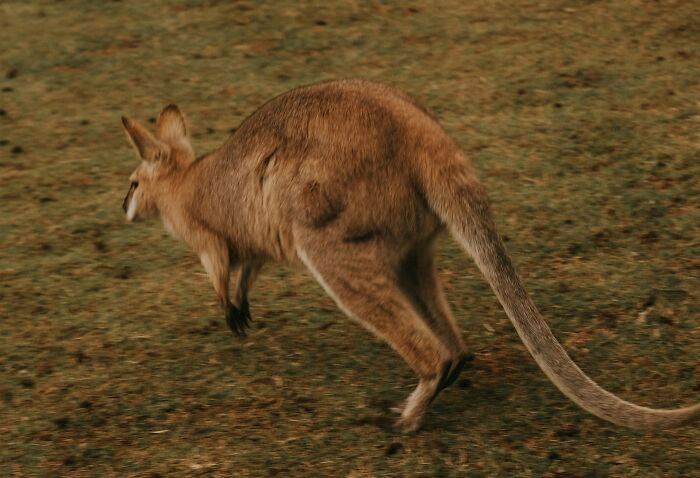
Image source: Valeriia Miller, PMC
#16 Male Kangaroos Use Displays To Show Dominance
To assert dominance, male kangaroos often signal control and power in various ways. One common display involves ripping up grass and presenting clumps of it to other males. It’s said that this gesture is both a behavioral and visual signal that subordinate males recognize as an act of dominance, keeping the superior male at the top of the hierarchy.
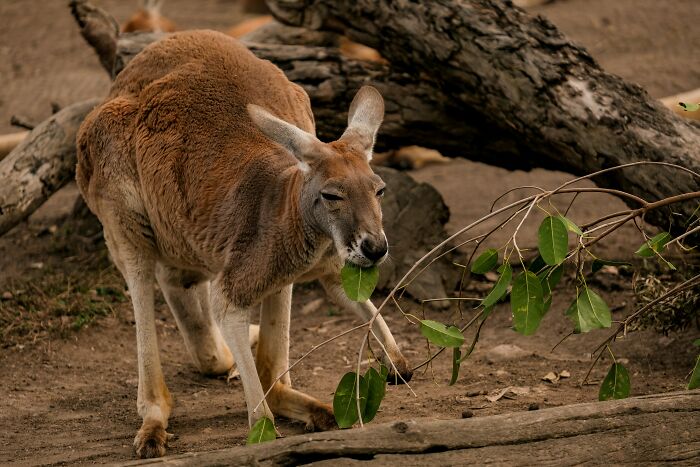
Image source: Valeriia Miller, Wikipedia
#17 Kangaroos Greet Each Other By Touching Noses
Sniffing each other’s faces and touching noses is often how kangaroos learn more about one another. When performing the greeting, the smaller kangaroo usually holds its body close to the ground and quivers its head, likely signalling submission. These greetings are quite common among females and larger males.

Image source: Paul Lichtblau, Wikipedia
#18 Kangaroos Produce Far Less Methane Than Cows And Sheep
While kangaroos also produce methane, it’s much less than the amounts sheep and cows do. Because they digest food faster, the bacteria responsible for producing methane have less time to work in their guts. Surprisingly, it was once believed that kangaroos had special gut bacteria preventing the production of methane, but actually, newer studies suggest that their quick digestive systems are the reason.
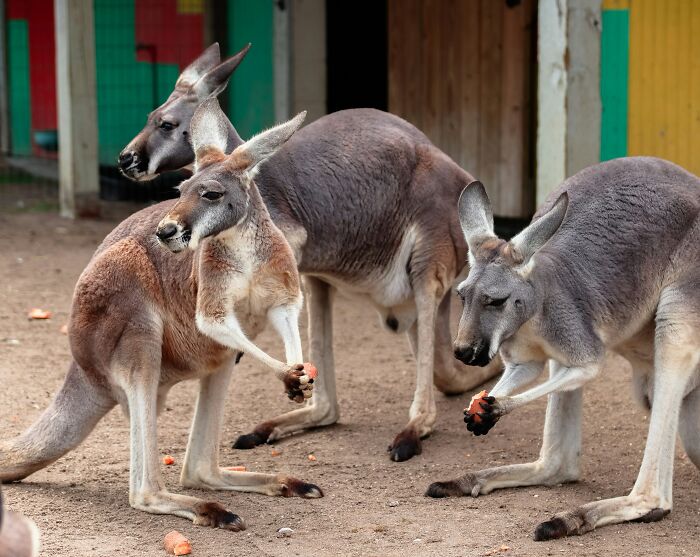
Image source: Katherine McAdoo, SWI
#19 Kangaroos Are Mostly Nocturnal
It might come as a surprise that kangaroos are more active at dawn, dusk, and even at night compared to during the day. It’s said this is because they can avoid the heat and use less energy to move around at night. While it may be true that they prefer nighttime activity, there are times when you’ll catch them out when the sun is shining.
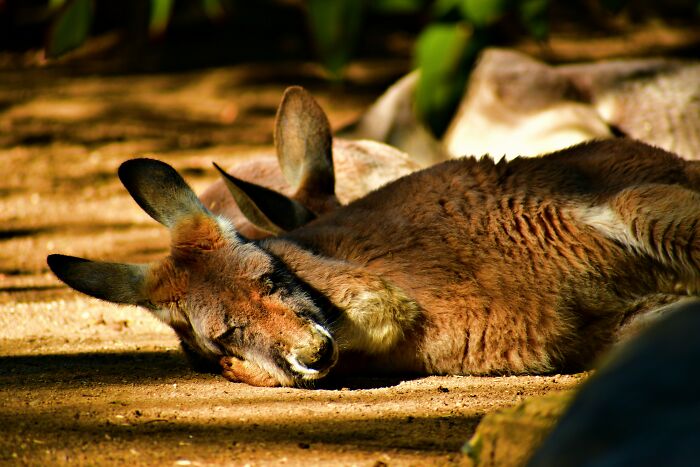
Image source: DOMINADOR KEBENG, Britannica
#20 Kangaroos Are The World’s Largest Marsupials
Kangaroos hold the title of the world’s largest marsupials. The red kangaroo, in particular, is considered the biggest species. In terms of height, most stand at an impressive six to eight feet tall from head to tail. They’re equally impressive in size, with adult males reaching weights of up to 200 pounds.
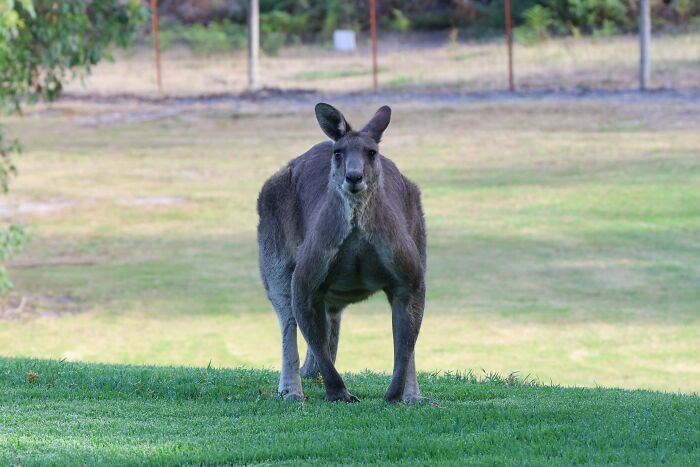
Image source: athomson1, Wikipedia
#21 Most Kangaroos Are Predominantly Left-Handed
According to research, eastern grey and red kangaroos almost always use their left paws for tasks like grooming or eating. While it may not seem groundbreaking, this discovery challenges the long-held assumption that ‘handedness’ is unique to primates (like us humans). Scientists believe this trait likely developed after these kangaroo species began walking upright, much like it did in humans.
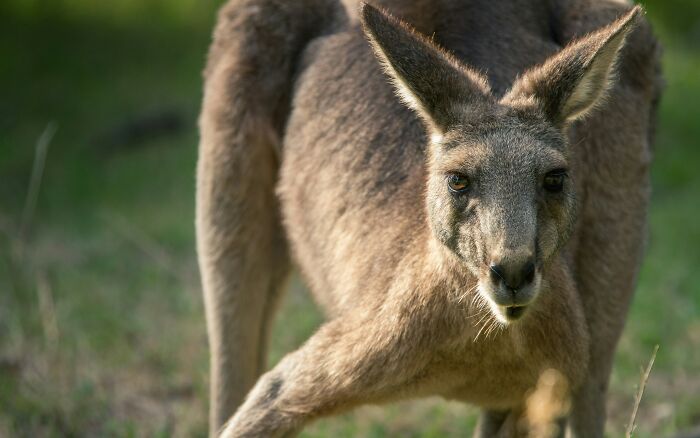
Image source: Jacob Dyer, National Geographic
#22 Kangaroos Are Harvested In Large Numbers For Meat And Skin
Believe it or not, it’s legal for licensed hunters to take the lives of kangaroos for both their meat and hides to sell commercially in domestic and international markets. It’s said that this activity, managed by the government, is necessary not just for revenue but to control the size of the kangaroo population.
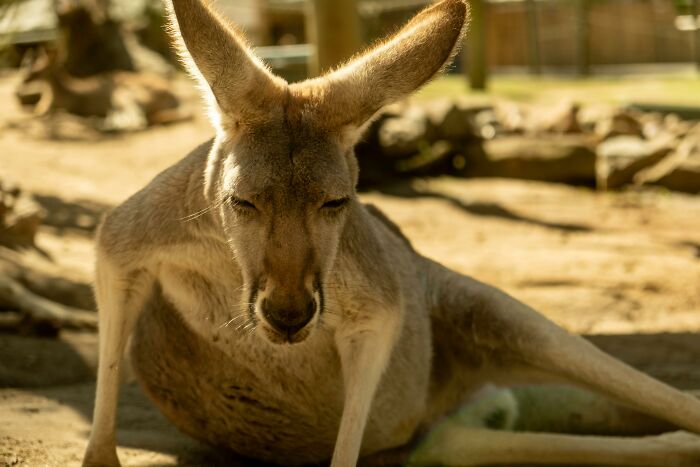
Image source: Nate Biddle, AWGIC
#23 Kangaroo Mothers Can Nurture Three Joeys At Once
Nurturing one baby in the wild is already an amazing thing, but supporting three at the same time is quite a remarkable feat that kangaroo mothers are capable of. Due to the ability to reproduce continuously, their bodies can nurture an embryo in the womb, a developing joey in the pouch, and an older nursing joey outside the pouch.
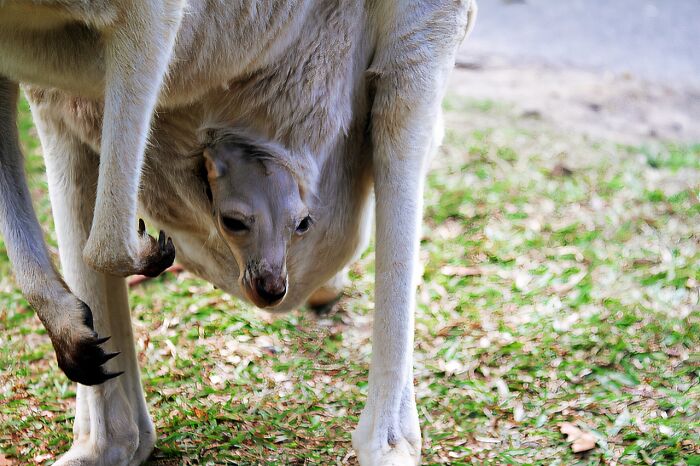
Image source: Silverish Lily, ELC
#24 Kangaroos Are Indigenous To Australia And New Guinea
Although you might spot one or two kangaroos in captivity around the world, the marsupials are generally only found in Australia and New Guinea. Interestingly, while the larger kangaroos that we’re all probably used to seeing on TV and the internet are native to Australia, the smaller species like tree kangaroos are indigenous to New Guinea.

Image source: Harrison Broadbent, Wikipedia
#25 Male Kangaroos Box Each Other During Fights
Male kangaroos can give Rocky Balboa a run for his money with their impressive boxing skills. They’re known to engage in some intense fights, and this ritualized behavior happens as a way to assert dominance, spar, and even gain access to certain resources like water. When boxing, the kangaroos utilize their tails as support while kicking opponents with their hind legs and use their forepaws to slap each other.
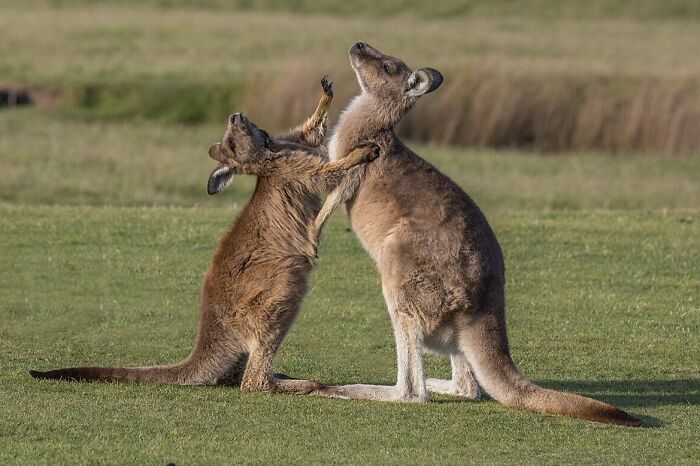
Image source: Charles J. Sharp, az Animals
#26 Kangaroos’ Ears Swivel Independently
To carefully listen to the sounds around them, kangaroos can rotate each ear up to 180 degrees. Amazingly, each ear can move independently of the other, and kangaroos can swivel them without moving their heads at all. This ability comes in handy when listening out for predators, as it allows them to remain absolutely still while scanning the perimeter for danger.
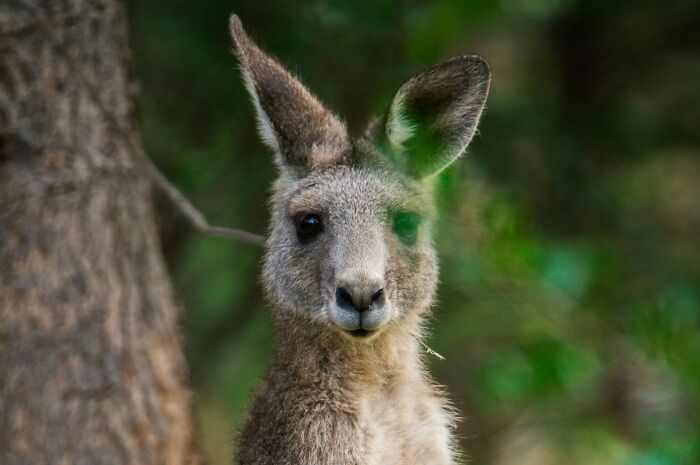
Image source: Jacob Dyer, Angie in Sydney
#27 Kangaroo Mothers Sometimes Sacrifice Their Offspring
It’s said that in desperate attempts at survival, kangaroo mothers are known to sacrifice their joeys. If, for some reason, they find themselves cornered by a predator, sadly, they will drop their young as a distraction. While this is generally believed to be true, some think a joey falling out of the pouch happens accidentally due to the mother experiencing extreme stress, and others say the offspring probably jumps out of the pouch on its own in an attempt to escape, too.
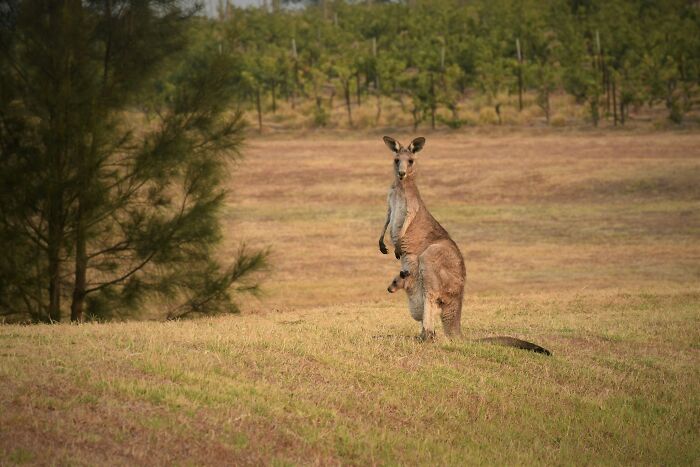
Image source: Mark Stoop, Treehugger Blog
#28 Kangaroos Are The Most Common Animal Hazard On Roads
As it turns out, kangaroos are hit by cars more than any other animal in Australia. Several reasons have been brought forward to explain this phenomenon, ranging from the large number of them in the population to the marsupials jumping across busy roads. As such, motorists are often advised to be cautious in known kangaroo habitats to prevent serious crashes.
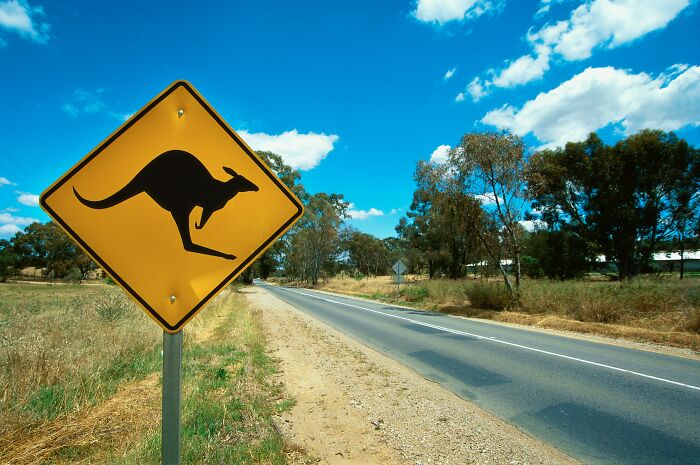
Image source: Getty Images, The Fact Site
#29 Females Can Pause Their Pregnancies
Remarkably, in a process called embryonic diapause, female kangaroos can pause their pregnancies for up to 11 months. When certain conditions, like food scarcity or another joey still developing in the pouch, aren’t favorable, this ability proves beneficial in keeping the embryos small until the environment improves. Mother kangaroos may also do this as a way to prevent overburdening themselves.
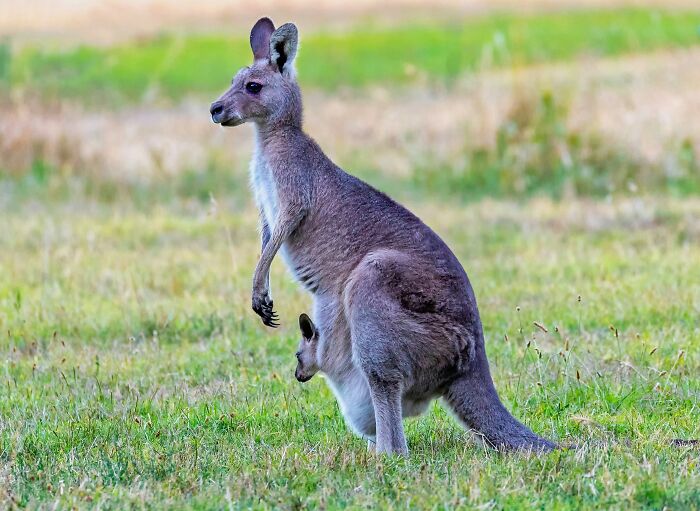
Image source: John Torcasio, Australian Museum
#30 Groups Of Kangaroos Are Called Mobs, Troops, Or Courts
Much like wolves, kangaroos are highly social animals and love to run in a “pack”. In Australia, the term mob is most commonly used to describe kangaroos living in a group. Other, less common terms used are troops or courts. These mobs can range from small groups to larger ones consisting of hundreds of kangaroos.
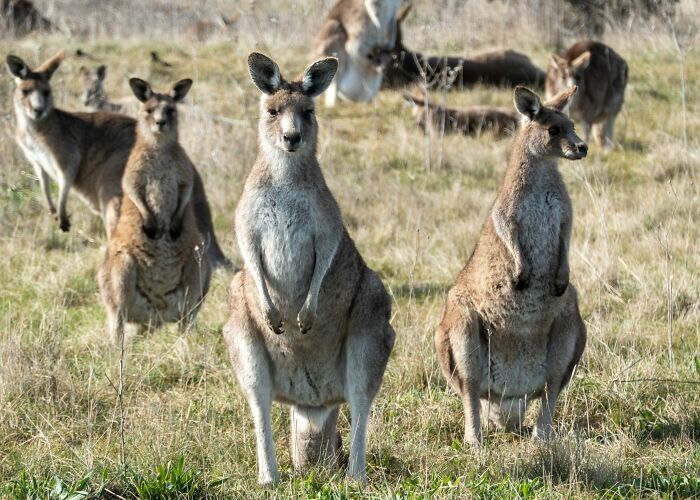
#31 Kangaroos Have Few Predators
Due to their size, speed, and power, adult kangaroos are challenging prey for most animals, and this is why in Australia, they have very few natural predators. The handful of predators that may pose a threat includes dingoes that target smaller or weaker adults and large birds such as wedge-tailed eagles that primarily target joeys. Unfortunately, human beings also make the list of dangers to kangaroos.
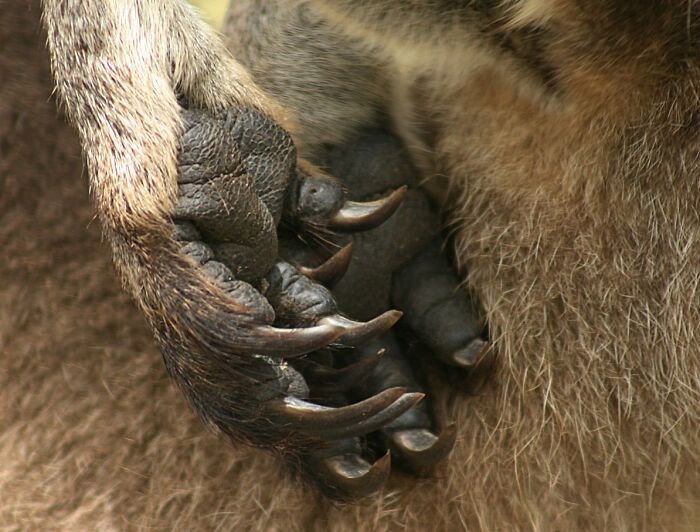
Image source: Toby Hudson, Bush Heritage Australia
#32 Kangaroos Only Sweat When They Are Hopping
While kangaroos have sweat glands, unlike most animals, they don’t rely on them to cool down since they only really work while they’re hopping or exercising. Instead, they usually resort to licking their forearms as a way to cool down. Sometimes, kangaroos may even pant much like dogs do to regulate their temperature.
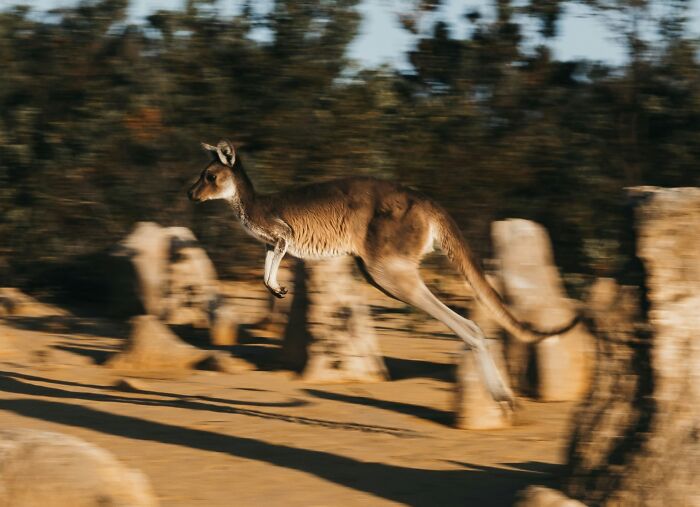
Image source: Jordyn Montague, San Diego Zoo Wildlife Alliance Library
#33 The Name ‘Kangaroo’ Is Derived From An Aboriginal Word
Long before the kangaroo was featured on the Australian Coat of Arms, the marsupial was culturally significant to the Aboriginal people, often appearing in ancient rock paintings and ceremonial art. Interestingly, the term kangaroo is derived from ‘gangurru”, a name given to kangaroos by the Guuga Yimithirr people centuries ago.
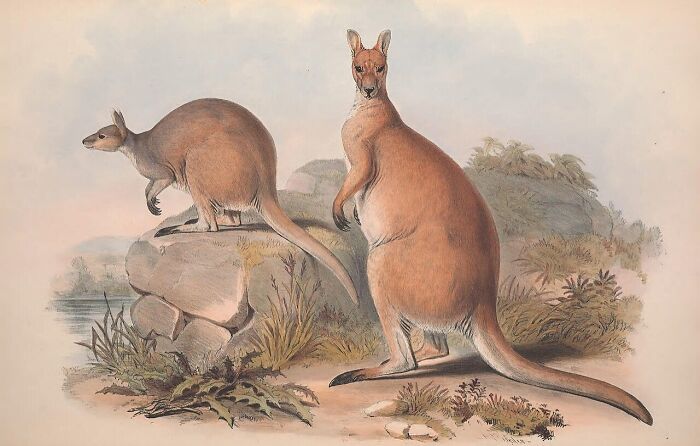
Image source: Gould, John, National Museum of Australia
#34 Kangaroos Are Good At Swimming
Kangaroos are actually quite capable swimmers, and much like dogs, they use the doggy paddle to get through water. While the marsupials are primarily land animals, they might get into the water as a way to escape predators or even to cool off. When threatened, kangaroos may even lure predators or pursuers to water so they can drown them.
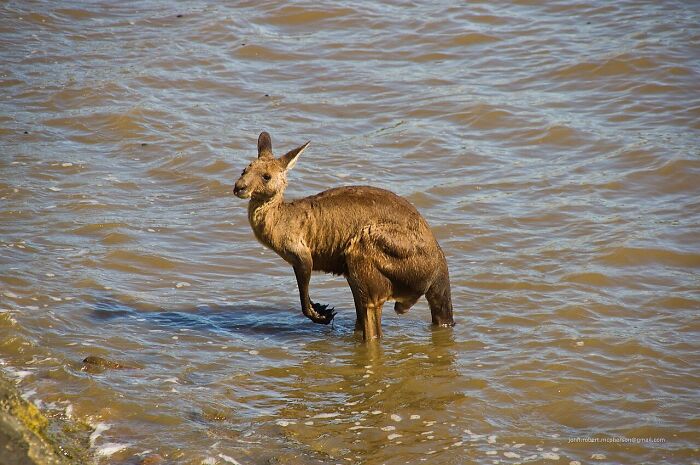
Image source: John Robert McPherson, World Animal Protection US
#35 Kangaroos Have A Relatively Short Lifespan
Due to unfavorable conditions such as a lack of resources, kangaroos only live an average of six to eight years in the wild, a relatively short time compared to other large mammals. In captivity, however, they can live over 20 years since they’re protected from predators and have access to unlimited food and water.
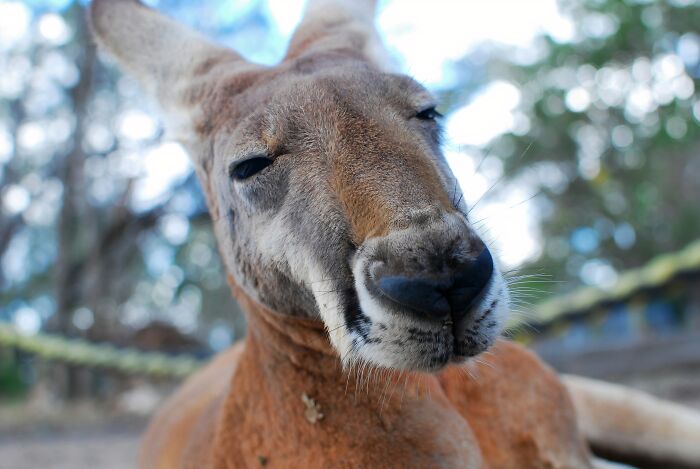
Image source: Ewa Gillen, Aarohi Achwal
 Follow Us
Follow Us





